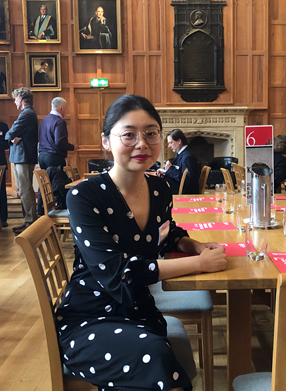Happy International Museum Day! 国际博物馆日快乐 (Guójì Bówùguǎn Rì kuàilè)!
Falling on 18th May since 1977, the International Museum Day has been a unique occasion for the global communities of museum goers and professionals to celebrate. This year’s theme of celebration is ‘The Power of Museums’.

The objective of International Museum Day (IMD) is to raise awareness about the fact that, “Museums are an important means of cultural exchange, enrichment of cultures and development of mutual understanding, cooperation and peace among peoples.”
International Council Of Museums
What does it mean by ‘The Power of Museums’ to you? How would it be possible that we, as visitors, can be empowered by museums? Today, we are delighted to invite WANG Xi (王曦), who specialises in museum with technologies for enhancing accessibility and just passed her PhD viva successfully, to explain her understanding of empowering visitors of special need through enhancing technological design in her project for the Titanic Museum (泰坦尼克博物馆 Tàitǎnníkè Bówùguǎn).

WANG Xi has been working at Queen’s University Belfast as a Marie-Curie Early Stage Researcher since 2018 and completed her PhD in Translation Studies at the School of Arts, English and Languages in May 2022. Her research interests are in museum accessibility. She currently works with world leading tourist attraction Titanic Belfast and RNIB to investigate novel access options that employ new technologies to improve accessibility and visitor experience for blind and partially sighted visitors.
Research project: Investigating Technologies to Enrich Museum Audio Description for Enhancing Accessibility
Museums are typically dominated by visual experiences. This means that people who are blind or partially sighted (BPS) tend to be excluded from several aspects of the visitor experience, including emotional engagement. The purpose of this practice-led research project was to explore ways in which smart software-enabled technologies could be used to enrich audio description (AD) and to enhance accessibility and visitor experience for BPS visitors. Working with Titanic Belfast and RNIB NI, I pioneered three approaches that combine a commitment to low-cost accessibility solutions and emotionally engaged visitor experience.

This project first presented a study of BPS visitor experience in Titanic Belfast, and applied for the first time existing models of visitor experience in the context of accessibility.

Next, based on the feedback from this study, I developed and evaluated a new approach to accessibility which used a multisensory smart map to present a journey-based story of Titanic’s maiden voyage. The smart map used readily available materials and affordable technologies, such as Raspberry-Pi. It also used software-controlled multi-function buttons to enable BPS users to autonomously select the desired AD and level of detail.

Finally, I proposed a major extension to the standard passive audio descriptive device by developing an interactive voice-driven museum audio descriptive guide for Titanic Belfast (TBot), with built-in navigation instructions and a free format Question and Answer facility. This TBot uses text-to-speech technology to generate AD from a textual knowledge base, speech recognition for input, to voice-activate the device; and a design platform that easily enables museum staff to produce, update and customise the chatbot.
Thanks to the funding from the Marie Skłodowska-Curie Doctoral Training Programme, I was able to run the 4-year-long project to investigate, develop and test innovative access options for BPS visitors, using new technologies within diverse museum environments. It has contributed several methods to enrich AD for enhancing museum accessibility and visitor experience for BPS visitors both theoretically and practically.
Author: WANG Xi
Editor: Martin Duffy
Related topics in the past:
- Language and History: the Ulster Museum and the Chinese community in Northern Ireland
- Mausoleum of the First Qin Emperor
- My journey to Henan Museum
